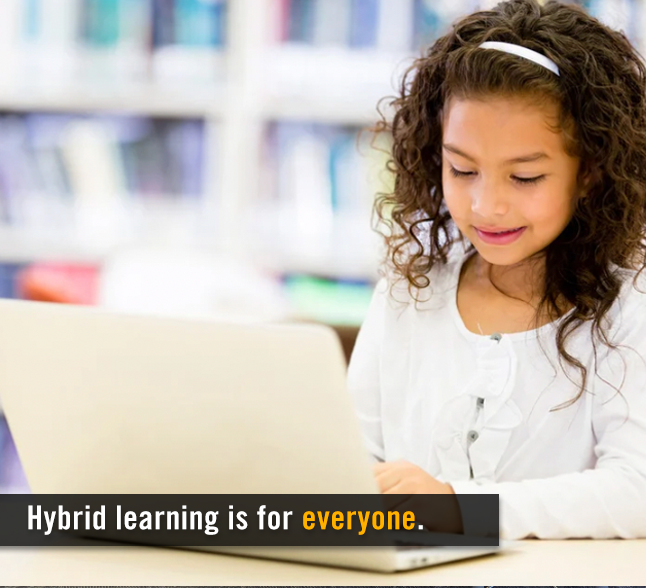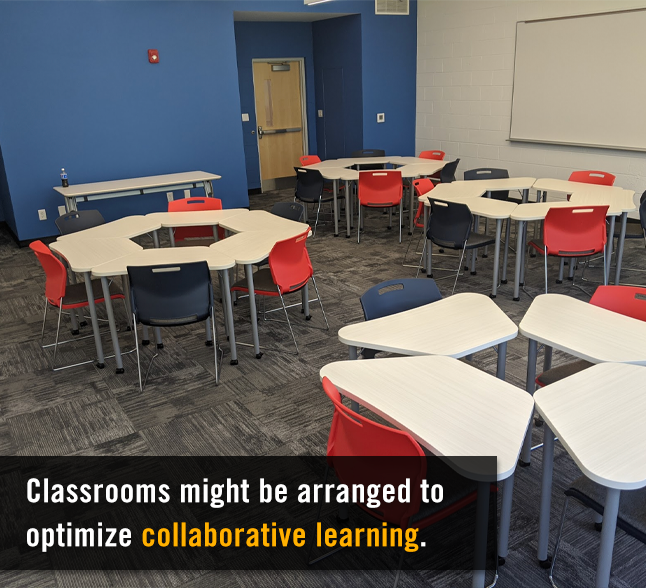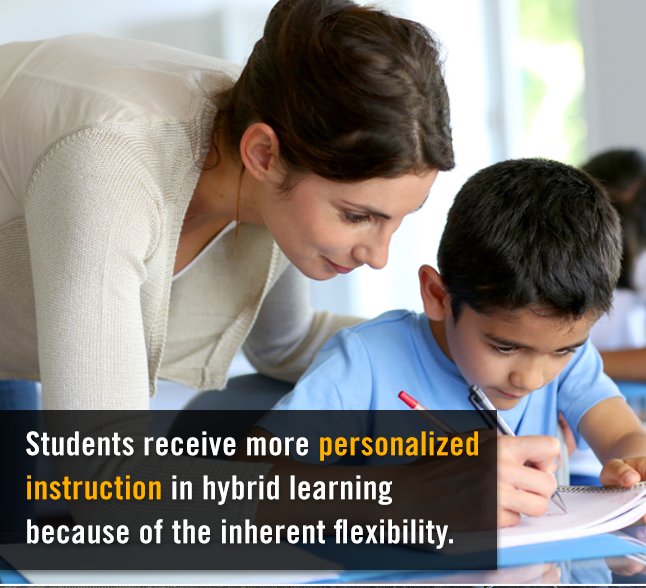Hybrid Learning: A Future-Proof Solution
We all know what the experience of "remote learning" was during the pandemic. Simply put, it was not high-quality in many cases. However, there is a silver lining: districts realized they need a "digital plan" and added plans for flexible learning not only for emergencies — which can include inclement weather or other hard-to-predict disruptions — but as a long-term and sustainable solution.
In comes hybrid learning — let's break down the model.
Who is hybrid learning for?

What does hybrid learning look like?
- Guided Instruction — Monday–Thursday, students engage in station rotation. Teachers determine what content should be elevated based on progress within a digital curriculum. In-class learning is guided by application of knowledge using the 4Cs (communication, collaboration, critical thinking, and creative problem-solving) held together by mindsets and dispositions. Personalized tutoring takes place on Fridays.
- Supported Instruction — with content delivered digitally, teachers can focus more on relationships in pedagogy. Monday–Thursday, students in grades 6-8 have face-to-face classes from 8:00–12:30 pm while students in grades 9–12 have face-to-face classes from 11:30– 4:00 pm. At 12:30, middle school students can choose to go home and complete independent work or remain on campus to work on projects or with teachers and/or learning coaches as needed. High school students have the same option, but may come to campus earlier than 11:30 for support or to work on projects.
- Modified Instruction — students complete regular check-ins with teachers but may complete their coursework (online) in the environment of their choosing. Students are "gradually released" into this pathway, with approval based on a combination of positive academic achievement and agency — students can navigate the LMS well, communicate with their teachers/mentors, collaborate with students, and engage with the curriculum.

In all three models, learning comes down to acquiring knowledge, gaining the skills to apply the knowledge, and practicing the mindsets/habits/dispositions to keep growing and adapting.
When can learning take place?
Hybrid learning can meet students where they are. Students have more choice and autonomy in their learning, and schools have more flexibility in how instruction is delivered. Depending on what model and tools a school is leveraging, when learning happens can vary.
In many cases, schools may use digital curriculum, which means asynchronous learning might happen entirely online on a student's own pace and on the student's own timeline. In other cases, teachers may deliver face-to-face learning and then assign students a practice or application task that can be completed online, offline, a combination, or in collaboration with other students. This is similar to traditional brick-and-mortar homework; however, in hybrid learning, students may have more time to complete their independent work, rather than adding assignments as homework on top of what was completed during the 7-hour school day.
Where do students learn?

Why would students and families want hybrid learning?
Interested in starting a hybrid learning program?

